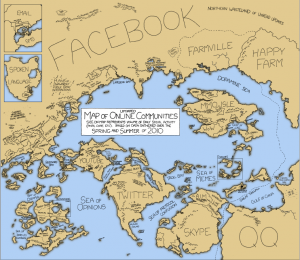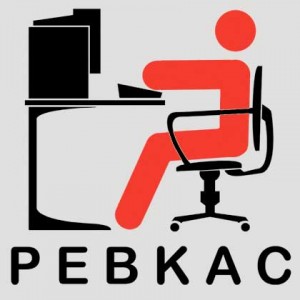
Blogging, Tweeting and “the” Facebooks are now deeply part of the modern business culture. We all have some sort of feeling that our communities built around our business are powerful marketing tools, or at the very least, a way of sending 10% off coupons to our existing clients. Whether our communities are really interested in some of the things we talk about or not is up for debate, but like any good arms race, NOT participating while your competitors are is a good enough reason for most firms to take the Social Networking thing seriously.
The problem is that constantly updating your blog, twitter account and Facebook status is time consuming, boring and expensive (not necessarily in that order.) These days, larger organizations have “Social Media Experts” or out source the work to specialist companies to handle it for them. We do some of this our selves at Sourcetoad for a number of clients and they seem pretty happy with not having to do it. But most small to medium size companies don’t have the cash to throw at an employee or company to constantly be churning out interesting tidbits for their customers to read. You also run into problems with some of the instantly gratifying uses of Social systems that can be used inside your organization like Wikis. So why is any of this stuff important and who is going to do it all?
Well lets look at why this stuff might actually help your bottom line first, and then find a couple of ways to do it.
First off, the internal stuff. Now unless you have a massive organization with an active social calendar, there isn’t a whole lot of use for something like an internal social network. Short of an intranet extension listing, you’re better off just having a locked down Facebook page if your employees are hanging out after work. But there are a few things that would be useful to have inside your walls.
A company wiki or knowledge-base can be an incredibly useful piece of IP for your business. If your company had a living document center that was open to all, and actually used, your would slowly build a great set of instructions, job profiles, best practices, common issues, company policies etc, for both new and existing employees to use as a resource. The thing is they would have to use it in order for it to pay dividends. Trying to move a culture to any new form of doing business is tough, let alone one that requires anyone to do any more work! But think about it; how many times has your sales manager had to email a sales person that application form, or explain the CRM system to a new employee. They’ve probably already written the same instructions 20 times, and are pretty sick of it. Getting a couple of key leaders in your organization to contribute what they’ve already written to the Wiki would be a great priming of the pump, and with minimal training, everyone else in the company could jump on the band wagon. Wouldn’t it be great to have a single repository of knowledge that anyone could read and contribute to? From the CEO posting a company history, to the CFO writing a document on how they do RFPs way down to the Janitorial staff laying out the cleaning supplies needed for the lab areas. It is tough to get right, but I’ve seen it work so well in a number of companies that I don’t know why it is not standard instructional material for MBA classes.

The second aspect of the “Social” trend is the external marketing side. We want to have a bunch of content on our blog because it’s the modern client newsletter, search engine food to attract new customers, and also a good place to post common issues that you can point your clients to when they run into problems. Facebook and Twitter are great for quick updates to your base, letting people know when new information, products and services are available as well as a great way to get feedback on your business. But both of these have the same problem: who the hell is going to do all this work?
Well the solution is simple: Everyone! If you have ten folks in your business, it becomes pretty easy to have an active Interwebs social life. All you really have to do is split the work up into easy to manage, bite size pieces and make it required. It doesn’t matter if you are a plumbing company or a large IT firm, everyone can do it. In fact, if you are a small plumbing company, you are probably going to benefit much more, because your competition is significantly less likely to be doing the same thing.
So! What you do is put an administrative person inside your organization in charge of the blog. They don’t have to be an expert, just someone who can read and write and knows when something should or shouldn’t be said. Then, make up a calendar with everyone in the company’s name scheduled. Have ten worker bees? Make a schedule of two blog posts a week in a five-week cycle. That means that every five weeks, one of your employees has to write a 250-word article about whatever they want to, as long as it relates to the core business. It doesn’t matter if they’re a budding novelist or not, anyone can churn out 250 words about something. And who is going to complain about having to write something every five weeks? It gets written, sent to the person in charge of the Social Stuff, briefly edited to sound something like English, and then turned loose on the world.
Now you might think that a plumbing firm would have a limited amount of interesting information they could post on their site, but, surprisingly, people who work on a task every day normally end up knowing a lot about what they do. We’ve done this with plumbers (as you can tell from my consistent example), Roofers, cookie bakers, and even bankers! And the results have been startling.

After setting up a small website for a roofing company, we put them on a blog writing schedule. At first there was a lot of complaining and grumbling, but within a few weeks, something amazing started happing; the actual roofers started competing with each other over who could write the better post, and who could get the most hits. Within a few months, the small Michigan-based roofing firm was number one on Google for their city name and pretty much anything to do with roofing. They were putting up an article every two days! The quality of the writing was not heart-achingly beautiful prose, but it was very useful, well thought-out information written by people who know a lot about roofs. We built a simple extension to post their article headings to their Facebook status and twitter feed and low and behold, an entire Social Network presence for a roofing company, something nothing of their competitors even came close to. And the punch line? Sales went up by 35% within five months! That’s right; 25 to 45 minutes per month per employee had an ROI of 35%. I don’t think there is anything in the known business universe that can come close to that. Now the reason it was so astonishing was that they’re in a pretty technologically impaired industry, so their competition was terribly organized, and the simple act of a blogging campaign brought in around 50-60 internet leads a month, when before they had none, but that’s kind of the point. The more you leverage this type of distributed work, and the smaller your niche, the more successful you’ll be with this type of strategy. Obviously if you’re doing something like selling books online, this is not going to but it, but if you’re in a field where most of your competitors are sitting on their hands, you’re going to make a big splash.




